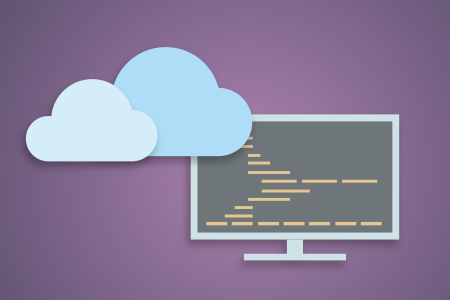What is Cloud Computing Architecture?
People and businesses should have an idea of what these concepts are. This is so that they could be aware of the platform that they are employing. These concepts define what is the cloud.
Parts of Cloud Computing Architecture

- Front End of Cloud Computing Architecture. The front end is one of the two major parts of cloud computing architecture. It is the client side of the platform. It is the cloud computing platform as seen by the client. This includes the design as it is shown to the client. Browsers, web design, and other parts visible to the client are also part of the front end. Some cloud providers take great pains to make their services user-friendly for clients.
- Back End of Cloud Computing Architecture. The back end of the cloud computing architecture is where the provider’s side is. This is where the real face of cloud computing architecture is located. The back end hosts the management and security backbones of the architecture. The service, storage, and application management are also located at the back end. This is where providers control, hold and develop the cloud computing platform.Much of the tasks at the back end is controlling the traffic that hits the cloud computing platform.
- Internet and Cloud Computing Architecture. The Internet is not necessarily a distinguishable part of the cloud computing architecture. But, the Internet plays a huge role in connecting the front end and the back end. Thus, the Internet is a sort of bridge that makes the two major parts work well. Without it, the client will not be able to reach the service provider. The same goes for the other way around.
Types of Cloud Computing Architecture
The types of cloud computing architecture are based on the main types of cloud computing. These types are distinguished from each other by their ownership. The third-party service provider and the client are the only identifiable owners.
The different ownership arrangements gave rise to the types of cloud computing. In one type, the platform is owned by a service provider, the client only hires them. In another one, the client is the sole owner of the platform. And, there is also a third type which is sort of a combination of the two mentioned setups.
- Public Computing Architecture. In a public cloud computing architecture, a true provider-client relationship is established. It is the most common way of building a cloud computing service. In a public cloud, clients avail the services of a provider. Multiple clients share the platform, hence the name public cloud. Providers in this setup offer services to clients through the Internet. Then, clients would also acquire services through the Internet. Public clouds offer low-cost services to clients. This is because the maintenance is shouldered by the provider.
- Private Cloud Computing Architecture. In a private cloud computing architecture, the third-party provider does not exist. In a private cloud, the platform can be physically located at a business’s premises. The maintenance and upgrades in the infrastructure are shouldered by the private entity. In this cloud computing architecture, the platform is exclusively used by the enterprise. Thus, they have full control of the platform with no third-party entity to intervene. A private cloud computing architecture would cost more to a business. But, it guarantees the best security practices for their data. It also has no risk of vendor lock-in.
- Hybrid Cloud Computing Architecture. As the name suggests, a hybrid cloud computing architecture combines elements of private and public clouds. It has the availability of the public cloud and the adaptability of the private cloud. Some of its parts are managed by the client. Some of its parts are also controlled by a third-party services provider. A hybrid cloud computing architecture is quite popular among businesses. In a 2017 report from CIO Jury, 75% of companies have moved to hybrid platforms.
Flexibility and adaptability are traits that made cloud computing architecture popular among enterprises. ThinkIT Solutions can provide flexible and adaptable cloud computing resources for your business. Get in touch with us at +1 (504) 455-5552 and info@thinkitsolutions.com.


 (4 votes, average: 4.00 out of 5)
(4 votes, average: 4.00 out of 5)